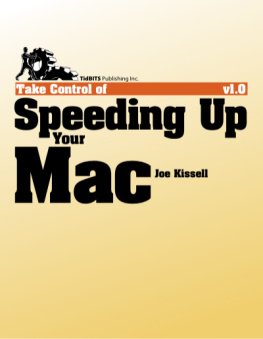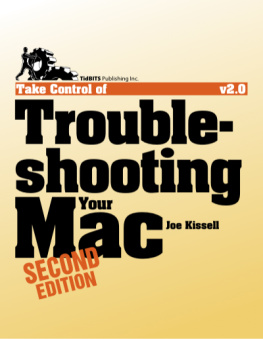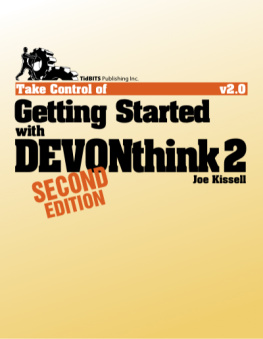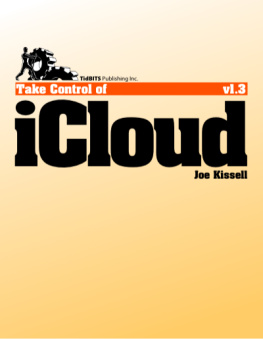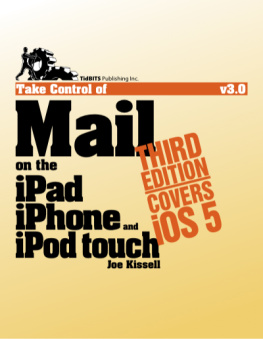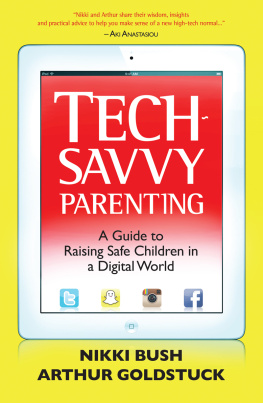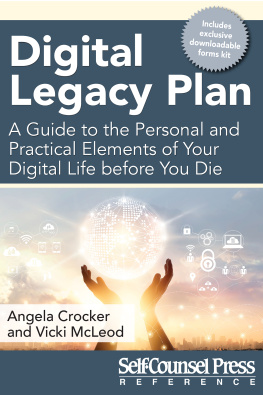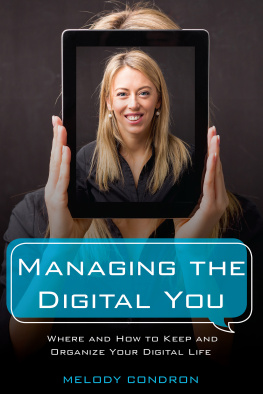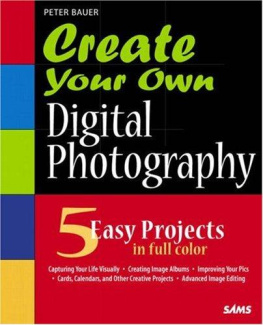This book walks you through the process of digital estate planning. It helps you identify the important information you may want to pass on to future generations, document your wishes in detail, and make practical decisions about preserving your data.
Discounted classroom and Mac user group copies are available.
Copyright 2017, alt concepts inc. All rights reserved.
You can access extras related to this ebook on the Web (use the link in , near the end; its available only to purchasers). On the ebooks Take Control Extras page, you can:
If you bought this ebook from the Take Control Web site, it has been added to your account, where you can download it in other formats and access any future updates. However, if you bought this ebook elsewhere, you can add it to your account manually; see .
Introduction
I turned 50 on January 9, 2017a little over 21 years after I started writing books about technology. For whatever reason, much of my audience over these years has been a generation or so older than me. I constantly get email from readers in their 80s and 90s, and when I speak to user groups, Im often the youngest person in the room by a considerable margin.
For a long time, this phenomenon was a mere curiosity, and I didnt consciously tailor my writing to an older reader. But then I started noticing that lots of the questions and comments I received had to do with topics I hadnt thought very deeply about myself: namely, how to deal with files, photos, email, online accounts, and other digital items when their owner died or became unable to handle them personally. People would come up to me after a talk about passwords or backups and say something like, Well, Im 89 so I wont be around much longer, and I want to make sure my son can get into my accounts when Im gone, or Im trying to figure out how my great-grandchildren will be able to read my documents 50 years from now.
Those questions deserve answers, and thats what I aim to provide in this book. Your digital legacywhether, how, and in what ways your data will carry on without youis a hugely important topic in the 21st century. No matter your age or health, something could happen to you at any time, and having a plan in place to deal with your accounts, files, and other digital data is a great kindness to your family and friendsto say nothing of future generations who may want to know all about you. (And, lest this all sound terribly morbid, the very same steps can be equally useful to someone who needs to take care of business for you temporarily if youre sick, injured, or even just on vacation.)
We have tools such as wills and trusts to spell out what should happen to our physical and financial assets, but more often than not, those instruments say nothing about our incredibly valuable digital assets. Maybe you have tens of thousands of beautiful family photos, but what if theyre on an encrypted computer and no one else knows the password? What will become of your Web site, Facebook account, or email if you alone know how to access it, and leave no instructions? And what will happen to all the data youve trusted to various cloud services when your credit card expires and no one else is paying the bills?
These are just a few of the many questions I help you answer in this book. I walk you through the process of inventorying your digital assets, figuring out what to do with each of them, drafting a digital will, choosing a digital executor, and much more. I also talk about information that isnt currently digital, but maybe should be if you want to preserve it for a long timethings like paper photos, analog video and audio tapes, and important family documents. And I discuss at length the nuts and bolts of decisions youll have to consider like which file formats and physical media you should use to preserve data for posterity, whether you should entrust any of this data to a cloud service, and how to be sure all your preferences are clearly spelled out.
In short, this book is about digital estate planning. Its not going to teach you new tech skills or get you excited about the latest apps and gadgets, but Ive done my best to make this essential topic interesting and engaging. By the time youve finished the steps in this book, you should be confident that your data will be in good hands when youre no longer able to manage it. In the process, you may just find yourself becoming more organized and better prepared for random, fleeting emergencies too.
In much the same way that a book could walk you through the mechanics of writing a will but not tell you which assets to leave to whom, I cant give you precise step-by-step instructions for everything, because each persons situation is unique. My goal, instead, is to provide a thorough framework that will help you identify what you need to do and make smart decisions about how to carry out your plans.
Whether youre 25 or 95, and regardless of which devices or operating systems you use, I hope youll find the resources here to put your digital affairs in orderand, with any luck, have some fun doing so.
What If I Cant Do Everything in This Book?
Please dont feel you have to follow every suggestion in this book, in detail. Of course, youre entirely welcome to do so, but depending on the amount and types of digital data you have, it could take quite a while to get through everything. As you develop your own digital estate plan, you can incorporate as little or as much of this information as makes sense to you, and in any order.
Even if you accomplish only a fraction of what this book describes, youre still taking important steps toward preserving your digital legacy and helping your family and friends make the most of your data.
Quick Start
In this book I lead you through a process of compiling, documenting, and preserving information that youll leave for future generations. For the most part, later topics build upon earlier topics, so I strongly recommend reading the book in linear order. (You may, however, choose to skip chapters or topics that dont apply to you.)
Take preliminary steps:
- Learn about the benefits and challenges of planning for your digital legacy; see .
- Make detailed lists of your major types of digital data in .
- Decide what types of data youll preserve for the future, who will handle your digital estate, what file formats to use, and more; see .
Prepare major categories of data for archiving:


